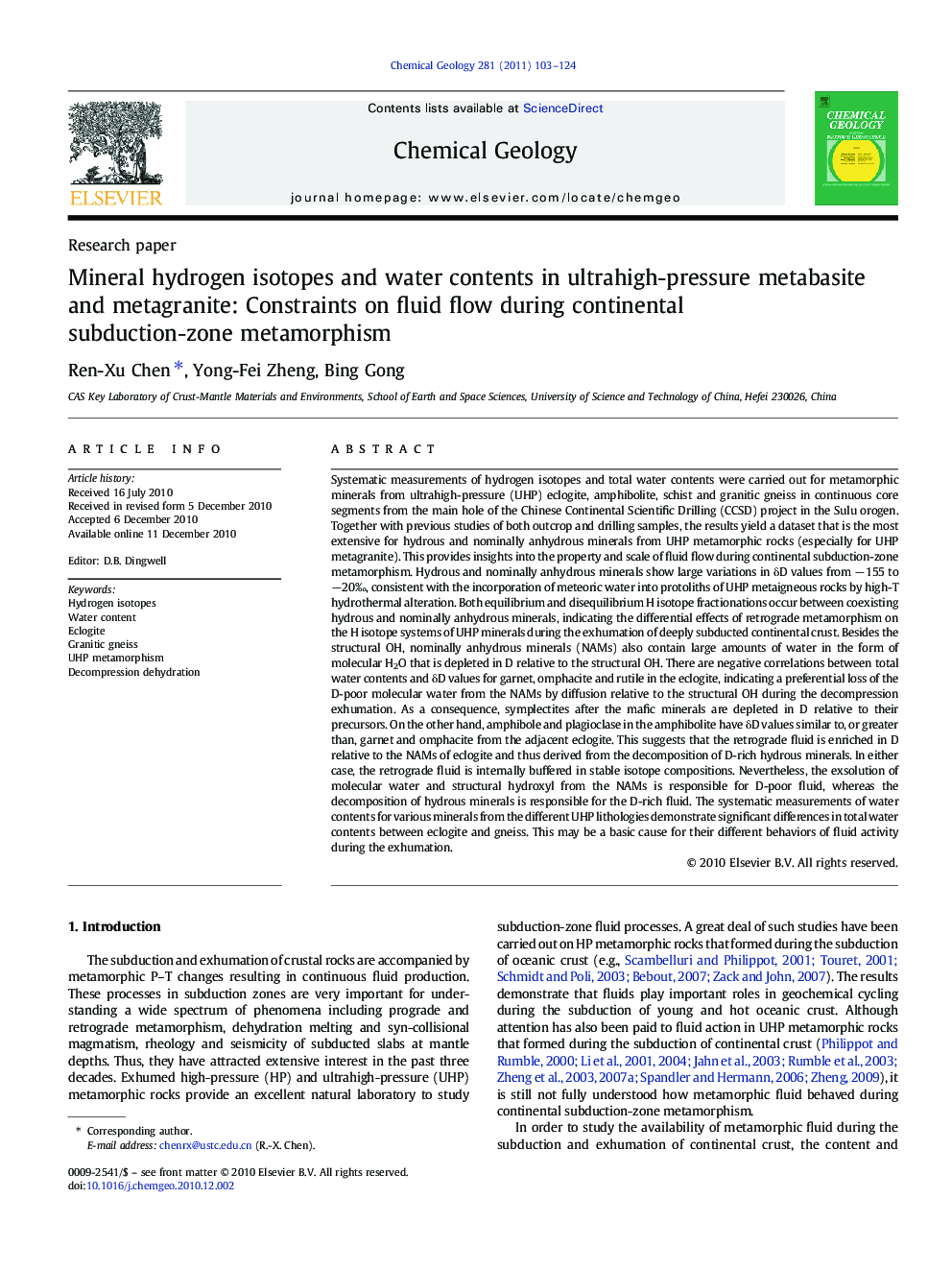| Article ID | Journal | Published Year | Pages | File Type |
|---|---|---|---|---|
| 6437035 | Chemical Geology | 2011 | 22 Pages |
Systematic measurements of hydrogen isotopes and total water contents were carried out for metamorphic minerals from ultrahigh-pressure (UHP) eclogite, amphibolite, schist and granitic gneiss in continuous core segments from the main hole of the Chinese Continental Scientific Drilling (CCSD) project in the Sulu orogen. Together with previous studies of both outcrop and drilling samples, the results yield a dataset that is the most extensive for hydrous and nominally anhydrous minerals from UHP metamorphic rocks (especially for UHP metagranite). This provides insights into the property and scale of fluid flow during continental subduction-zone metamorphism. Hydrous and nominally anhydrous minerals show large variations in δD values from â155 to â20â°, consistent with the incorporation of meteoric water into protoliths of UHP metaigneous rocks by high-T hydrothermal alteration. Both equilibrium and disequilibrium H isotope fractionations occur between coexisting hydrous and nominally anhydrous minerals, indicating the differential effects of retrograde metamorphism on the H isotope systems of UHP minerals during the exhumation of deeply subducted continental crust. Besides the structural OH, nominally anhydrous minerals (NAMs) also contain large amounts of water in the form of molecular H2O that is depleted in D relative to the structural OH. There are negative correlations between total water contents and δD values for garnet, omphacite and rutile in the eclogite, indicating a preferential loss of the D-poor molecular water from the NAMs by diffusion relative to the structural OH during the decompression exhumation. As a consequence, symplectites after the mafic minerals are depleted in D relative to their precursors. On the other hand, amphibole and plagioclase in the amphibolite have δD values similar to, or greater than, garnet and omphacite from the adjacent eclogite. This suggests that the retrograde fluid is enriched in D relative to the NAMs of eclogite and thus derived from the decomposition of D-rich hydrous minerals. In either case, the retrograde fluid is internally buffered in stable isotope compositions. Nevertheless, the exsolution of molecular water and structural hydroxyl from the NAMs is responsible for D-poor fluid, whereas the decomposition of hydrous minerals is responsible for the D-rich fluid. The systematic measurements of water contents for various minerals from the different UHP lithologies demonstrate significant differences in total water contents between eclogite and gneiss. This may be a basic cause for their different behaviors of fluid activity during the exhumation.
Research Highlights⺠TC/EA-MS analyses of hydrogen isotopes and water contents in minerals from UHP metamorphic rocks. ⺠An extensive dataset for the storage capacity of water in the minerals of UHP metamorphic rocks. ⺠The species of metamorphic water and the spatial scale of fluid flow during continental subduction-zone metamorphism. ⺠Preferential exsolution of the molecular water by diffusion from NAMs during exhumation of the deeply subducted continental crust.
